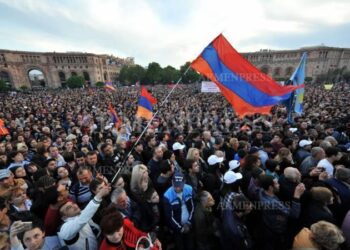Unveiling the Multifaceted Purpose of Ireland’s Megalithic Tombs
Recent archaeological investigations are challenging the long-held perception that Ireland’s megalithic tombs were solely burial sites. Emerging evidence points to these ancient stone monuments as dynamic hubs for social interaction, ceremonial rites, and even early astronomical observations. Far from being mere resting places for the deceased, these structures appear to have been integral to fostering community cohesion among Neolithic populations.
The architectural sophistication of these tombs—marked by precise alignments with solar and lunar cycles—suggests a deep understanding of celestial phenomena. This knowledge likely played a crucial role in regulating agricultural calendars and seasonal festivals, essential for sustaining prehistoric societies. For instance, some passage tomb entrances align with solstices or equinoxes, indicating their function as primitive observatories guiding communal activities.
Symbolism and Social Identity Embedded in Megalithic Artistry
Intricate carvings adorning many Irish megaliths reveal symbolic motifs that extend beyond funerary purposes. Researchers propose that these designs communicated shared beliefs or social values, reinforcing group identity across generations. Rather than simple decoration, such iconography may have served as visual narratives during rituals or storytelling sessions held at these sites.
- Ceremonial Importance: The tombs likely hosted events strengthening social bonds through collective participation.
- Astronomical Functionality: Alignments with celestial events underscore their role in timekeeping and ritual timing.
- Community Focal Points: Evidence suggests they were venues for gatherings involving feasting and cultural celebrations.
Rethinking Burial Sites as Centers of Social and Cultural Life
The evolving interpretation of Ireland’s megalithic monuments invites us to reconsider ancient burial practices within a broader societal framework. These structures were not isolated sepulchers but vibrant spaces where living communities engaged in remembrance ceremonies that reinforced collective memory and identity.
- Commemorative Rituals: Periodic assemblies at the tomb sites may have served to honor ancestors while uniting community members through shared heritage.
- Cultural Performances: Activities such as communal feasts or oral recitations could have linked participants spiritually with their forebears while preserving traditions.
- Economic Interactions: Some scholars hypothesize that trade exchanges or decision-making forums took place here, embedding the tombs into everyday life beyond mortuary functions.
| Main Role | Description |
|---|---|
| Ancestral Burial Site | A sacred location serving as final resting place for community forebears. |
| Ceremonial Venue | A setting for rituals reinforcing social cohesion and spiritual connection. |
| Cultural Repository | A medium preserving myths, stories, and collective memory through generations. |
| Social Hub & Trade Point | A gathering place facilitating economic exchange alongside cultural activities. |
Archaeological Insights Informing Future Conservation Strategies
This broadened understanding of Ireland’s megalithic tomb functions has significant implications for both archaeological research methodologies and heritage preservation efforts. Recognizing these sites’ multifarious roles encourages interdisciplinary approaches combining archaeology with anthropology, astronomy, ethnography, and environmental science to construct richer narratives about prehistoric life on the island.
Sustainable conservation must now consider not only protecting physical remains but also honoring intangible cultural values embedded within them. Key priorities include:
- < strong >Engaging Local Communities: Involving residents fosters stewardship while ensuring traditional knowledge shapes site management.< / li >
- < strong >Respectful Public Access: Balancing visitor experience with preservation safeguards enhances appreciation without compromising integrity.< / li >
- < strong >Environmental Management: Addressing erosion risks , climate impacts ,and visitor pressures helps maintain site longevity .< / li >
< / ul >Conclusion: Redefining Ireland’s Ancient Monuments as Living Cultural Landmarks
The ongoing study of Ireland’s megalithic tombs reveals them not merely as silent memorials but vibrant centers where prehistoric communities celebrated life cycles through ritualistic practice intertwined with practical needs like agriculture timing. These findings invite us to appreciate how deeply interconnected early societies were—with each other, their environment—and how they expressed this relationship architecturally across millennia.
As future research continues unraveling layers of meaning encoded within stone chambers aligned under starry skies , we gain invaluable perspectives on human resilience , creativity ,and spirituality . Ultimately , this enriches our global heritage narrative by highlighting how ancient peoples shaped landscapes into enduring symbols reflecting both mortality & communal vitality . The echoes from those distant times still resonate today —reminding us all about our shared journey across time .By embracing this holistic view , archaeologists , conservators,and communities alike can ensure that Ireland’s iconic megalithic monuments remain treasured landmarks —not just relics —but living testaments connecting past wisdom with present identity .
This paradigm shift underscores an essential truth : history is never static ; it evolves alongside our understanding —inviting continual discovery beneath every stone circle & passageway etched into earth ’ s memory .















